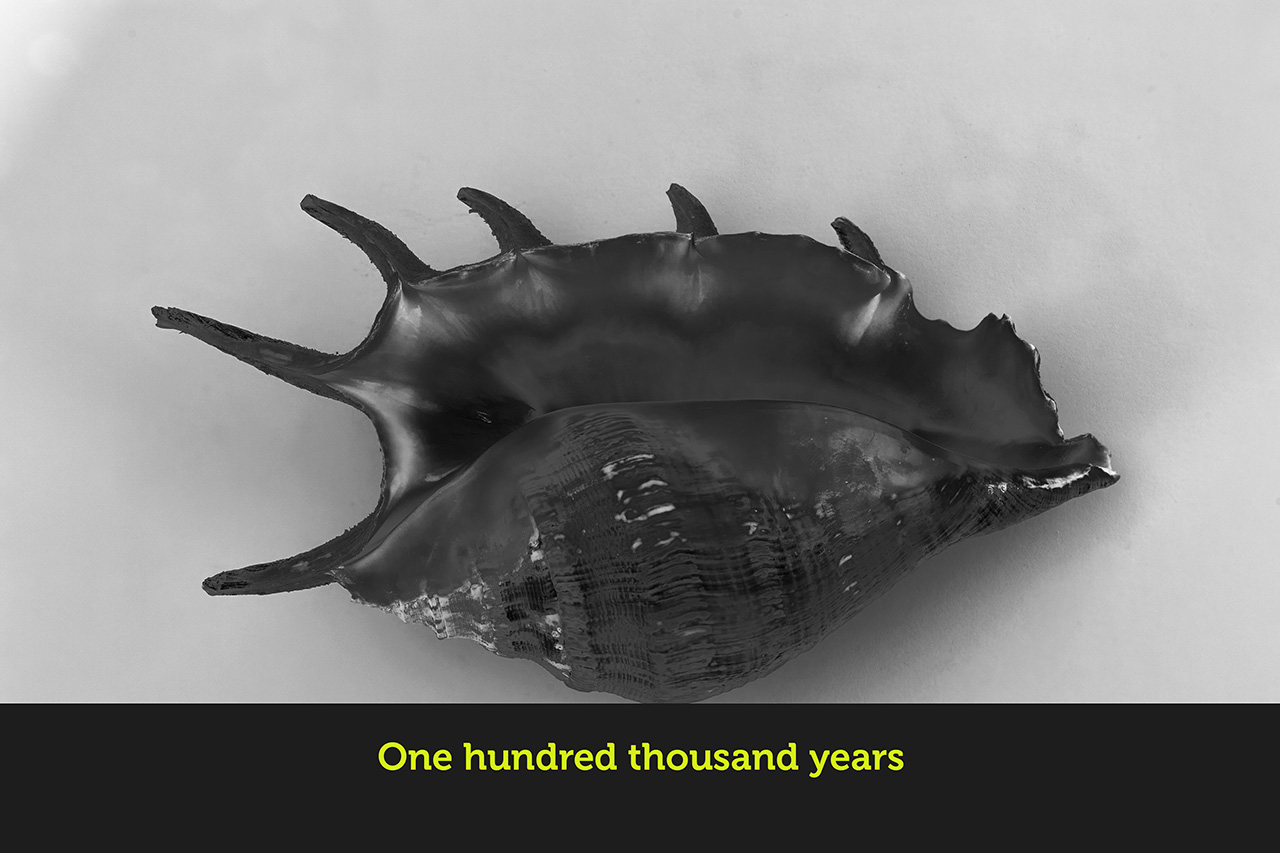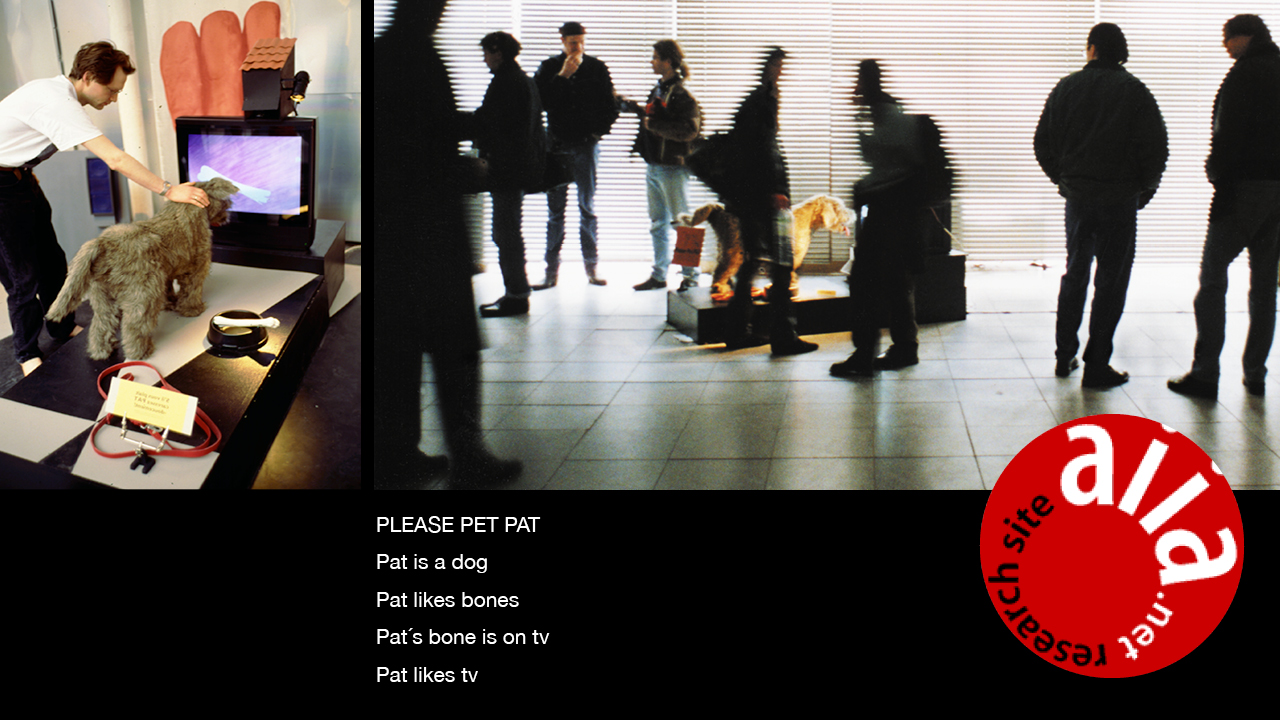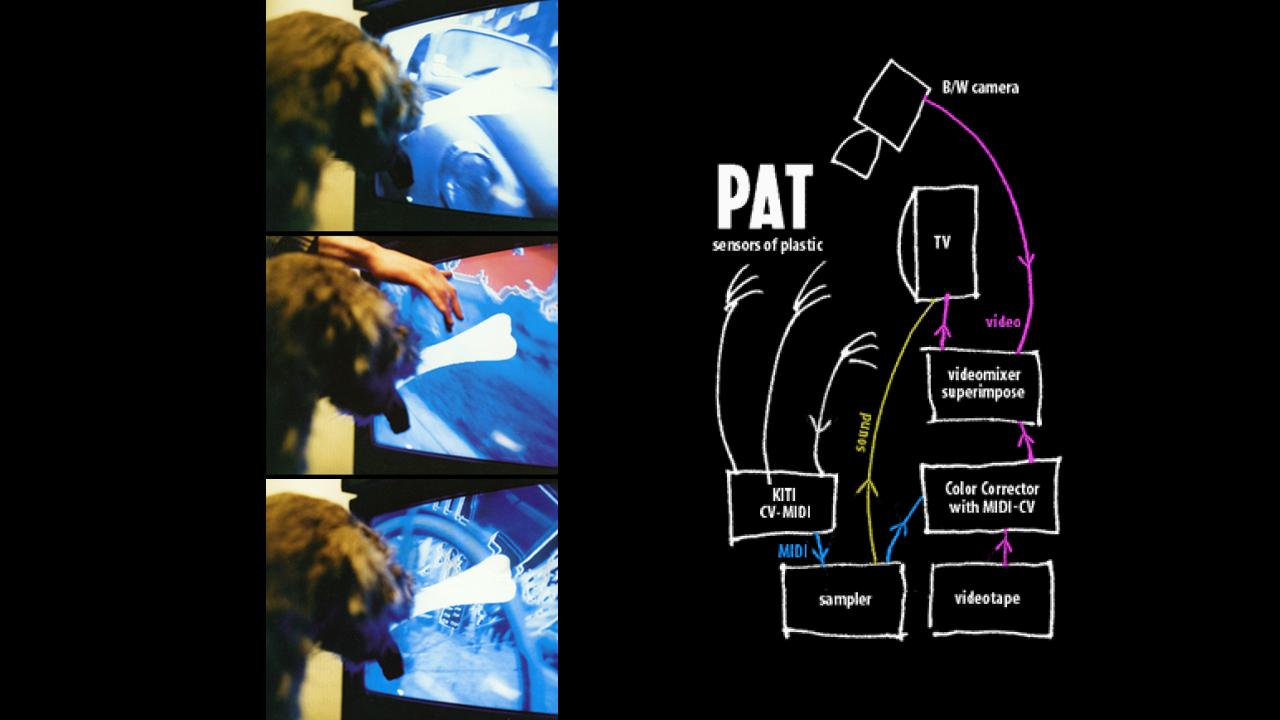
Download file for print, 1,7MB, 300x200mm
Copyright “One hundred thousand years” © 2025 by Jonas Lindkvist is licensed under CC BY-NC-SA 4.0.
To view a copy of this license, visit https://creativecommons.org/licenses/by-nc-sa/4.0/




A sound and image installation from 2001.
Mixed sounds from the wilderness and from the city.
Morning sounds from an eucalyptus forest in Warra, Australia.
Sounds of people in Shimbashi shopping mall in Tokyo, Japan.
Even the most remote places on earth are marked by humanity. Today, there are no entirely untouched natural areas. Still, we want to believe that the wildness is protected, with plants and animals in nature reserves unaffected by humankind. But nature reserves, much like museums and private collections, are created by humankind.
In the future, how will we relate to the wilderness that is left?
Strict regulation of sensitive areas limits accessibility. Nature that is made inaccessible means it remains invisible: we’re not even aware of its existence.
Unprotected areas are often spoiled or disrupted, making them less attractive to tourists. Yet local support for nature reserves often depends upon tourism as the latter provides rural communities with a means of economic survival.
National parks and nature reserves are often created in areas where forestry and natural resource industries find nothing to extract. However, exploitation is permitted even in protected areas if it benefits local or national economies.
This installation, by presenting nature as a cultural space, prompts viewers to pose ecological questions.
”Wilderness Preserves” moves the sounds of nature to urban contexts, thus overcoming our political and ethical distance from the nature reserve. This project goes one step further than Manuell Castell when he observes:
“Culture has overcome Nature to such an extent that this artificiality is revived (in ‘reserves’) as a cultural form.” If we are entering into a new era in which nature is reconstructed as a cultural ideal, what is our responsibility to that which we reconstruct?”
There are no entirely untouched natural areas. Even the most remote places on earth are marked by humanity. Nature is preserved in reserves.
Time and place shift when sounds from different cultures meet. “Wilderness Preserves” moves preserved sounds from the wilderness to unexpected places in our urban environment.
Sounds, such as those recorded from the preserved wilderness of our day, were most likely heard at these sites sometime in the past.
How do we experience the culture in which we live – penetrated by mechanical and digital sound—when it merges with the sounds of nature?
In the future, how will we relate to nature that remains?
“Wilderness Preserves” consists of sound extracts from three places in Australia which can be described as nature reserves. These sounds are a preservation of the mood of these places, recorded over the course of one day.




The Internet, existing for more than twenty-five years, has already become a major part of both our working and leisure lives. Digitalization will soon encompass every nook and cranny of our existence.
Chips, cookies, spyware, cameras, microphones, refrigerators, telephones and everyday gadgets and appliances – they will all collect huge quantities of data.
Without our knowledge.
Our digital shadow.
As we move through the city's streets and squares, on buses, trains and cars, sensors constantly collect data about our behaviors and routines.
It seems only a question of time until everything – even our emotions and thoughts – are traceable,for good and for bad. Aside from meta-data, we volunteer data about ourselves on social media and in comments’ fields.
The amount of data collected is growing drastically. Merging, the data converges and devolves into Big Data: the new hard currency that is bought and sold by companies and public actors.
With digitalization, Big Data is becoming increasingly important as a basis for decision-making, for example, for advertising, community service and political campaigns, with messages tailored and micro-targeted to fit each one’s digital identity.
We want to believe we live in a democratic society. Where we all have a choice. The question is: To what extent do we want the amassment and manipulation of datapoints to control our everyday lives?
When we choose apps, gadgets and electronics, we make a personal choice which, by extension,also impacts future society and cultural conditions.
In this poster magazine, we pose some questions about the power and might of the digital.
Project Terms-of-Use page in Swedish
Term-of-Use har utvecklats av Pehr Mårtens och Jonas Lindkvist. Projektet har erhållit startbidrag från stiftelsen Kulturbryggan och har i samarbete med Stockholms Stadsbibliotek pilottestats på Kista Bibliotek tillsammans med Kista IT-Gymnasium hösten 2016. Projektet består av en väggtidning och en seminarie/workshopmodul.




aiia was an art project created by Tommy Dahlman and Jonas Lindkvist between 1992–1995. The aiia.net research site and the aiia lab collects and presents studies of communication whether artistic, philosophical, or technological in nature.
The lab is a collection of ideas, philosophical ramblings, and works in progress. aiia projects work with interactivity in installation art. Its main purpose is to study the interaction between people, art and technology.
One of the projects in aiia lab was “Please pet Pat”, an installation that experimented with interaction between humans and technology. We toured with “Please pet Pat” at art exhibitions during 1992–1995.
PAT WHY?
Pat is art.
Pat is about communication.
Pat is a dog.
I can pet Pat.
Why should you pet Pat?
The ideas behind Pat
How do we make you understand that you can interact with our objects of art and then show you how to interact? The ideal interface would sense your curiosity and your needs and then reward you with the perfect experience.
Who is Pat and exactly why is his bone on video?
Pat was born in a brainstorm in 1993. This ragged, streetwise dog is of an entirely new breed: canis sapiens, the wise dog. Mind you, he’s not just another intellectual; he still lives by his instincts. Pat just loves watching his bone and would really like to put it in his mouth and chew it up. But being the sophisticated, urban dog he is, he realises that as soon as he takes the first bite, the dream is over and reality takes over.
Have you ever felt a deep need for some special piece of equipment? Maybe a new car or a computer or maybe a very special blow-dryer? Think about how perfect life would be if you owned it. The fantastic things you would do with it. Do you remember your eager steps on your way to the store. Smiling to the salesperson and hurrying home to a new and better life. Sometimes you actually do get the hardware of your dreams, but all too often glorious hope is turned into deepest dismay. Suddenly, you realise you can’t even turn the thing on without consulting the manual. By the way, the manual is written in a strange mixture of English and German, with Japanese word order. Your favourite functions are only referred to briefly, in clauses that mention that it’s possible to do this and that. Unfortunately, there’s no description of how to do it. Then there’s the accessory you thought was part of the deal. Of course, it’s optional. Together with the other peripherals you absolutely need, there goes another week’s salary … I think you get the picture.
Pat chooses not to open the box. He prefers to watch his bone on video. That way he can go on dreaming. Are you willing to give up your illusions just for a bite?
Do you really want to interact, or would you rather just watch the movie?
